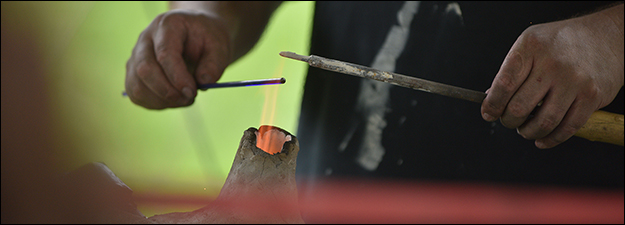The Archaeology of Medieval Europe I: Non-monetary Uses of Coins
Sponsoring Organization(s)
Center for Medieval and Early Modern Studies, Univ. of Florida
Organizer Name
Florin Curta
Organizer Affiliation
Univ. of Florida
Presider Name
Alan M. Stahl
Presider Affiliation
Princeton Univ.
Paper Title 1
The Erotics of Marriage Jewelry in Byzantine Egypt
Presenter 1 Name
Ashley Elizabeth Jones
Presenter 1 Affiliation
Univ. of Florida
Paper Title 2
Roots of Germanic Coinage
Presenter 2 Name
Aleksander Bursche
Presenter 2 Affiliation
Univ. Warszawski
Paper Title 3
Money and "Barbarians": Enhancing Social Prestige on Byzantium's Northern Frontier (Sixth-Seventh Centuries)
Presenter 3 Name
Andrei Gandila
Presenter 3 Affiliation
Univ. of Alabama-Huntsville
Start Date
15-5-2016 8:30 AM
Session Location
Schneider 1140
Description
The explosion of studies in medieval numismatics over the last 50 years or so has shed a new light on a number of phenomena at the intersection of economics and social, or even ritual behavior. Is a coin found within or next to the skeleton skull in a medieval burial an instrument of exchange or a symbol for a set of beliefs to which scholars have only limited access, because of the lack of contextual information from the written sources? How are coins perforated and worn as pendants to be interpreted, and what criteria applied in Late Antiquity and the Middle Ages for the selection of particular coins to be worn as pendants? Finally, what insights can one get into the role that images, such as ruler portraits, inscribed on coins had in Late Antiquity and the early Middle Ages through the examination of coins turned into jewels? Above all, this session attempts to answer some of those questions through a number of key case studies.
Florin Curta
The Archaeology of Medieval Europe I: Non-monetary Uses of Coins
Schneider 1140
The explosion of studies in medieval numismatics over the last 50 years or so has shed a new light on a number of phenomena at the intersection of economics and social, or even ritual behavior. Is a coin found within or next to the skeleton skull in a medieval burial an instrument of exchange or a symbol for a set of beliefs to which scholars have only limited access, because of the lack of contextual information from the written sources? How are coins perforated and worn as pendants to be interpreted, and what criteria applied in Late Antiquity and the Middle Ages for the selection of particular coins to be worn as pendants? Finally, what insights can one get into the role that images, such as ruler portraits, inscribed on coins had in Late Antiquity and the early Middle Ages through the examination of coins turned into jewels? Above all, this session attempts to answer some of those questions through a number of key case studies.
Florin Curta

